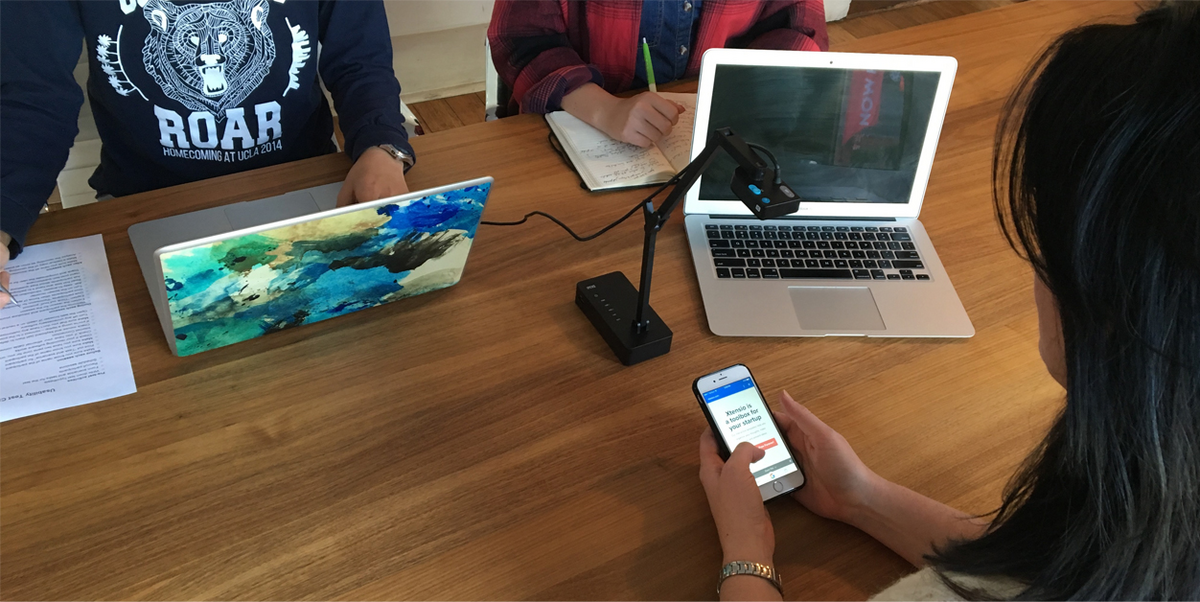When it comes to your conversion rate, your messaging is the biggest factor. Images, videos, and design facilitate the experience, but the words you put on the page (or in your app) have the biggest impact on the user experience and whether people buy.
The challenge, however, is that it’s hard to judge the effectiveness of your messaging. You and your team are too close to your ecommerce brand to do it well. You have to get feedback from actual customers and prospects through message testing.
In this article, we explain message testing, why you need it, and how to get started. This advice will help you use messaging to incite maximum conversions.
What is Message Testing?
Message testing is the process of evaluating and refining the messaging of a product, service, or brand in order to ensure that it effectively communicates its intended value proposition to its target audience.
The goal of message testing is to identify how well a message resonates with its intended audience, whether it effectively communicates the desired information, and whether it elicits the desired response or action.
Message testing can involve a range of methods, including surveys, focus groups, interviews, and A/B testing. Surveys can be used to gauge the overall effectiveness of a message and to identify any areas for improvement. Focus groups and interviews can provide more detailed insights into how a message is received and interpreted by different segments of the target audience. A/B testing involves testing different versions of a message to determine which one is most effective at achieving the desired outcome.
Ultimately, message testing is an important step in the development and refinement of your marketing, helping you understand your target audience and to create messaging that is clear, compelling, and impactful.
Why Should You Conduct Message Testing?
The importance of message testing lies in its ability to help brands create messaging that resonates with their target audience. By testing different versions of messaging, you can identify the message that is most engaging and likely to elicit a response or action from your audience.
This can lead to increased engagement and response rates, ultimately improving the effectiveness of marketing efforts.
Message testing also helps you ensure that your messaging is clear and effective in communicating the intended value proposition. You can identify any areas of confusion or ambiguity in the messaging and refine it accordingly. This can help to improve brand perception and establish a strong brand identity.
Message testing can also save resources by identifying any issues and making adjustments before investing significant resources in marketing and advertising efforts. For instance, you might test your messaging on a small sample before investing deeply in a marketing campaign.
Most importantly, message testing prevents you from making “echo chamber” assumptions. The leadership of brands often make the mistake of assuming certain details are obvious and self-evident. The language you use makes sense to the people in your company and your stakeholders, but that doesn’t mean it resonates with your customers. Message testing takes you and your team out of the equation to ensure your content aligns with the people who actually buy.
Generating Ideas for Message Tests
Before you can start the actual message testing, you need ideas for tests. It’s best to use a mix of quantitative and qualitative research methods. There is no universal approach to this. Your research should be tailored to any type of messaging content you produce, such as:
- Home page content
- Advertising copy
- Social media posts
- Blog content
- Product detail pages
- Category pages
- Positioning statements
- Product names or logos
- Email campaigns
- Customer support communications
- Chat bot responses
Here are some ways to learn about what customers (and potential customers) think about your copy.
1. Message testing tools
You can use dedicated messaging testing tools and services to streamline the research gathering process. These resources recruit a panel of people from your target audience and test them on a page of your site, an email campaign, ad copy, or other messaging.
Test participants can be asked predetermined questions and/or on-the-spot questions from the moderator. (See below to learn how to design the right questions to ask.)
This is exactly how UserInput’s managed customer research service works. We pair you with real people in your target market to collect unfiltered feedback about your shopping experience, including the content of your messaging. You’re guaranteed to receive feedback that is clear, comprehensive, and unfiltered.
2. Five second test
In a five-second test, you give your audience a five-second glimpse of whatever you’re testing. Then you ask them questions about the copy. This is a great way to learn whether they can quickly comprehend your value proposition and message clarity.
3. On-site polling
On-site polls are unobtrusive popups that ask questions about specific elements of the customer journey, usually relating to the page they’re on at the moment, with a single question. You can create these polls using tools like Hotjar and Qualaroo.
These kinds of polls are valuable because they query real users on your site. They also tend to see high engagement because they don’t ask much out of the user – just one question. They’re also anonymous, so the responses tend to be honest.
Your polls could ask a simple question, such as “What should we do to make this page more useful?” or “Does this page lack any information you need?”

Don’t be afraid to ask product-specific or content-specific questions as well. For instance, an auto parts vendor might run a poll that asks, “Does this page make it clear that your purchase can be shipped to a store in your area in one day?”
You could also use a Likert scale to measure the degree of your users’ opinion. Users can pick one of five options that represent their degree of agreement or disagreement. These polls are simple to create, easy for users to complete, and offer a surprising amount of insight. You can also evaluate them quantitatively.

Hotjar has an excellent guide on using on-site polls. We recommend checking it out if you decide to use polling.
4. Heat maps
A heat map is a graphical representation of how users interact with a page. It can show you where they drag their mouse, where they click, and how far they scroll. It can help you determine the effectiveness of your messaging by highlighting what makes them push forward and what makes them drop off of your site.
Hotjar is a powerful tool that offers many user interaction features.

5. Website analytics
Like heatmaps, your website analytics (using tools like Google Analytics and Adobe Analytics) can quantitatively tell you how people engage with different pages of your site. If people drop off at a certain page, it might be your messaging that turns them off. Look at these pages and consider if your copy aligns with their expectations.
In Google Analytics, you can use the User Flow report to identify where people drop out of your site.

Keep in mind, however, that your website analytics can’t tell you what’s wrong definitively. It can only point you toward what needs improvement.
6. Review mining
Review mining is the process of exploring customer reviews to extract insights about your messaging. This data can be exceedingly valuable because it comes from real customers.
For instance, suppose several negative reviews indicate that customers don’t understand your shipping policies. Based on this, you might consider adjusting the language of your shipping policy. Or you might consider changing the location of this information.
The challenge with review mining, however, is that it’s time-consuming. The only way to mine reviews is to go through them one-by-one. Start with the most negative and work your way up.
7. Customer interviews
Don’t neglect the value of a simple, one-on-one conversation with your customers. They’re tough to manage at scale, and sometimes they take a lot of time, but their feedback can be invaluable, especially if the customer comes to you with something to say.
If one-on-one interviews are too labor intensive for you, consider conducting focus groups of six to ten people. This lets you speed up your interview process. The downside, however, is that a person’s responses can be influenced by the group.
Designing Message Testing Questions
It’s important to ask the right questions during your message testing research to determine whether your content resonates with your target audience. The right questions will produce the feedback you need to make impactful changes.
Your questions should address the LIFT model. The LIFT framework was created in 2009 by Chris Goward, the CEO of WiderFunnel. It’s a model for analyzing web and mobile experiences to develop testing hypotheses.

The LIFT model considers six conversion factors from your audience’s perspective. The basis of the LIFT model is the value proposition. Relevance and clarity elevant the value proposition. Distraction and anxiety pull it down. Urgency propels it forward.
As you design questions for your research, make sure they address these concepts:
- Value proposition: Does your messaging show the importance of your products and explain the benefits users will get? Does your copy explain how those benefits will change the customer’s life for the better?
- Relevance: Is your messaging and value proposition relevant to your audience’s needs? Does your copy relate to whatever source brought the customer to that page (e.g. does the landing page headline match the copy in the ad they clicked)?
- Clarity: Does your messaging tell visitors who you are and what you are about without forcing them to perform any outside research? Can they understand your messaging in seconds, or do they have to think about it for a minute?
- Urgency: Does your messaging drive urgency, by either antagonizing internal urgency or creating external urgency? Is it clear that you expect them to take action?
- Anxiety: What makes your prospects second guess their decision? Have you given them a reason to hesitate? What can you do to build trust and credibility?
- Distraction: What part of your messaging distracts your visitors from reaching their final goal? Does anything slow down the conversion process?
Here are some example message testing questions that meet the criteria of the LIFT framework.
- After reading everything, is anything still unclear?
- What’s your biggest doubt after reading this copy?
- What would make you agree to the offer? (But you can’t change the price.)
- What do you like most about the messaging?
- Does this copy make you want to learn more?
- What do you think this message is trying to say?
- If you could make one change to the message, what would it be?
- How has the message changed your perception of the product?
The LIFT framework is a good start to help you design message testing questions, but don’t let it limit you. Spend some time thinking about the information you need. Then design questions to extract that information from your target customer.
Conducting Message Tests
Once you have an idea about what your customers think of your messaging, turn those issues into problem statements. Problem statements follow this format:
Users [do this] because [problem].
For instance, you might create the following problem statements.
- Users don’t understand our shipping policy because the language is too complex.
- Users think our products are cheap because we don’t mention our quality materials.
- Users don’t think our products help parents because we never mention parenting or kids.
Problem statements are just the starting point. They simply guide experimentation. Next you need a hypothesis, which is a testable explanation or prediction based on what you know. Here are some hypotheses that match those problem statements.
- Concise and simple language will help users understand the shipping policy.
- Mentioning our premium materials will make users understand that our products won’t fall apart after a few uses.
- Talking about parents on our home page will show users that we have families in mind.
Armed with your hypotheses, it’s time to run tests. This is the meat of message testing, where you expose different messaging to users and measure the results. There are basically two ways to do this:
Qualitatively: Customer interactions
Qualitative testing involves capturing non-numerical data from customers and potential customers. Essentially, you ask open-ended questions and collect their answers.
In order to gather qualitative data, you need to have customer interactions: interviews, focus groups, and user tests. Repeat some of the methods you used during your information gathering and compare the results.
For instance, if you ran a message test where users complained that your product titles were unclear, run the same test again on your refined titles. If they don’t make the same complaints, your refinement worked. If they raise the same issues, you still have more work to do.
Quantitatively: A/B testing
Quantitative research involves collecting hard data that allows you to measure change. This means A/B testing is a fantastic way to test the impact of your copy. It tells you – definitively – what works and what doesn’t. It doesn’t rely on anyone’s feelings or opinions. It only measures what actually happens.
The process is simple: Show different versions of a page to portions of your audience. Make sure to only change one element of your messaging. The version that gets more conversions is the winner. Repeat for each message element of your page to build a conversion powerhouse.
SimpleTextin has a great guide on A/B testing. This graphic gives you a quick rundown of how it works.

Message Testing is an Ongoing Process
Now that you understand how to conduct message testing, consider it part of your regular marketing routine. Your messaging can be tested at any point in your business’ life cycle. It’s useful to ideate, explore, and develop new copy, but you can also use it to refine polished copy.
Keep in mind that customer attitudes and preferences can change over time. Trends, industries, and cultures shift constantly. So it’s important to revisit your massage testing regularly to ensure you’re always using accurate and relevant language.


